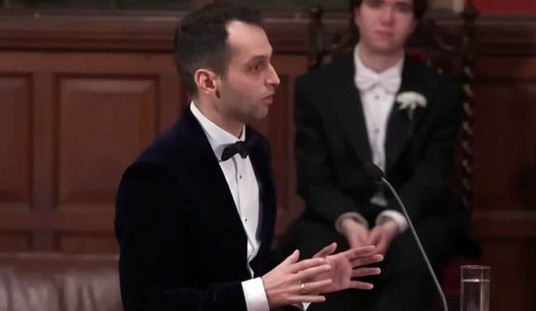A follow-up to yesterday’s post. Today was the big meeting of the Advisory Committee on Immunization Practices to formalize the recommendations they’ve been mulling on how to prioritize the first doses of vaccines. The feds are hoping/expecting FDA approval of Pfizer’s and Moderna’s products within the next few weeks; states want to hit the ground running on distributing it and needed to submit their plans to the feds by this weekend. That’s where ACIP comes in.
Logically enough, they ended up recommending sending the vaccines where it’s needed the most. That means hospitals and doctors’ offices, where workers are most likely to encounter the virus, and nursing homes, where residents are most likely to die from it.
[B]ecause of the limited doses, the panel’s work group suggested that health-care systems prioritize their personnel even further. They might do that by staggering vaccinations by individual units, such as emergency departments; giving vaccine first to those with direct patient contact and those who handle infectious material, and to personnel who provide services to patients or their families.
CDC officials said they anticipate most of the estimated 40 million doses will be distributed by the end of December. After that, five to 10 million doses of vaccine are expected to be sent out each week…
The advisory committee has expressed support for, but not yet voted on, the likely order for three groups who should get the shots next: essential workers (about 87 million people, not including health-care personnel) in phase 1b; people 65 and older (about 53 million) and adults with underlying medical conditions that put them at higher risk of getting very sick with covid-19 (about 100 million) in phase 1c. The groups overlap. Many health-care and essential workers also have underlying conditions, and some are over 65.
Deborah Birx and HHS chief Alex Azar reportedly wanted to start rolling it out to senior citizens ASAP but that seemed hard to justify in light of the limited supply of vaccine and enormous population of seniors in the U.S. The way it’ll work instead, apparently, is that all — or most, I guess, given the numbers — medical professionals and nursing-home patients will be fully vaccinated by late December or early January depending upon how efficient local officials are in getting this done. And according to the CDC, they expect to be *very* efficient:
‼️ great news from CDC official Nancy Messonnier: most states say they can vaccinate all health care workers within 3 weeks (remember it’s a two dose vaccine with ~one month in between though)
— Emily Kopp (@emilyakopp) December 1, 2020
Even with 40 million doses available initially, there’ll be a shortage since there are 21 million health-care workers and three million nursing-home residents and everyone needs two doses. Presumably, as the excerpt says, certain medical workers who don’t have much direct contact with the community will be deprioritized. I’m also surprised to learn that they’re expecting to crank out 10 million doses per week in 2021, as that rate would push us well into summer by the time there’s enough for the entire population. Yesterday an official at Operation Warp Speed suggested a similar timeline:
“100% of Americans that want the vaccine will have had the vaccine” by June.
— Lt. Gen. Paul Ostrowski (Ret.), Operation Warp Speed Supply, Production & Distribution Director pic.twitter.com/3UFGYJNBWI
— The Recount (@therecount) November 30, 2020
An open question right now is whether, after essential workers, seniors, and people with comorbidities get their shots in the next batch, the rest of the population will be invited to queue up or if there’ll be further prioritization within the group of healthy Americans. Do the middle-aged go before young adults? Do kids go last?
Today’s vote wasn’t unanimous, by the way. It was 13-1. Why the lone dissenter? Because, she said, we just don’t know how safe the vaccine might be for frail elderly people. Seems like something we should find out before injecting three million of them, no? Not really, said the other 13 members:
The only member of the committee to vote against the recommendation was Dr. Helen Talbot, an infectious-disease specialist at Vanderbilt University, who expressed discomfort with putting long-term-care residents in the first priority group because the vaccines’ safety had not been studied in that particular population. “We enter this realm of ‘we hope it works and we hope it’s safe,’ and that concerns me on many levels,” she said before the vote.
But most panel members who offered opinions said they thought the high death rate among that group made it imperative to include it.
Dr. José Romero, the chairman of the panel, said that he felt strongly that its process had adhered to its core principles: “maximizing benefit and minimizing harm,” promoting justice and addressing health inequities. Dr. Beth Bell, the co-chair, acknowledged that all of the members would have liked more data from clinical trials but said that because of the pandemic emergency, “we need to act.”
Ideally the FDA would slow down the approval process and wait for more data on potential adverse effects to very old trial subjects. But they’re under intense public and political pressure to greenlight the vaccines ASAP, with the White House reportedly set to hold a “vaccine summit” next Tuesday that’s being viewed by attendees “as an opportunity for the White House to pressure the FDA to quickly issue emergency authorizations for the first two vaccines candidates to be reviewed.” The White House is also working the FDA behind the scenes, with Mark Meadows hauling in FDA chief Stephen Hahn for a meeting this morning to ask him why he recently took a vacation to North Carolina when the rest of the country is urgently awaiting FDA vaccine approval. (Hahn says it wasn’t a vacation, rather that he was forced to quarantine.) Time is of the essence — but the more rushed the process is, the more reluctant people who are ambivalent about getting vaccinated will be to take a chance on the vaccine once it’s available.
For a million different reasons, let’s hope nursing-home residents tolerate their vaccinations well. If they don’t, not only do we risk a Cuomo-scale humanitarian catastrophe but the general public’s willingness to get the shot will fall off a cliff.
In lieu of an exit question, here’s a slide from a CDC powerpoint on how to prioritize groups for vaccination. These are the considerations they’re weighing for the next round of vaccinations, after medical personnel and nursing-home patients are all immunized.










Join the conversation as a VIP Member